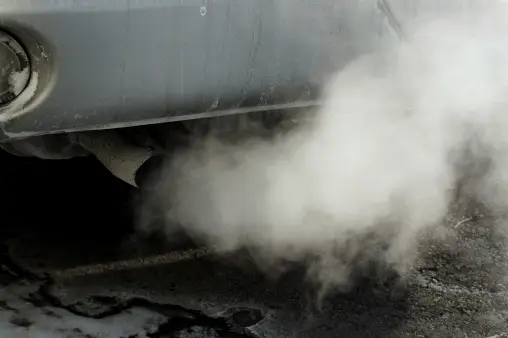March 11, 2025
What is the exhaust pipe on a car?
The exhaust pipe on a car is a component of the vehicle’s exhaust system that serves the purpose of directing and expelling the exhaust gases produced by the engine out of the vehicle. As a car’s engine burns fuel to produce power, it generates a mixture of gases, including carbon dioxide, nitrogen oxides, water vapor, unburned hydrocarbons, and other pollutants. These gases need to be safely removed from the engine and released into the environment.
The exhaust pipe is usually made of metal and is connected to the engine’s exhaust manifold, which collects the exhaust gases from each cylinder of the engine. The collected gases are then funneled through the exhaust pipe, which typically runs underneath the car and leads to the rear of the vehicle. In some vehicles, there may be additional components in the exhaust system, such as catalytic converters and mufflers, which help to reduce harmful emissions and noise.
The exhaust pipe is an essential part of a car’s overall functioning, as it ensures the proper expulsion of exhaust gases and helps maintain the engine’s efficiency while minimizing environmental impact.

How many exhaust pipes does a car have?
The number of exhaust pipes on a car can vary depending on the make, model, and configuration of the vehicle. Most passenger cars typically have a single exhaust pipe, while some performance-oriented or high-performance vehicles might have dual exhaust pipes.
Single Exhaust: Many cars have a single exhaust pipe that collects the exhaust gases from the engine’s cylinders and routes them through a single pipe to the rear of the vehicle. This design is common in everyday vehicles and helps keep manufacturing costs lower.
Dual Exhaust: Some vehicles, especially those with higher-performance engines, may feature dual exhaust pipes. In this setup, each bank of cylinders in the engine has its own exhaust pipe, and the pipes often exit the vehicle on either side of the rear. Dual exhaust systems can improve engine performance by allowing for better exhaust gas flow and reduced backpressure.
It’s important to note that the number of exhaust pipes is just one aspect of the exhaust system’s design. Other components, such as catalytic converters, mufflers, resonators, and exhaust tips, can also play a role in how the exhaust gases are managed and the overall performance and sound characteristics of the vehicle.
Can I drive with a bad exhaust pipe?
Driving with a bad exhaust pipe can be dangerous and may lead to several issues. Here’s why:
-
Safety Concerns: If the exhaust system is leaking, carbon monoxide (a toxic gas) could enter your cabin, especially if you have leaks near the engine or under the vehicle.
-
Environmental Impact: A damaged exhaust pipe can cause your car to emit more pollutants than usual, which is harmful to the environment.
-
Performance Problems: A bad exhaust can reduce engine efficiency, leading to poor fuel economy, rough idling, or engine performance issues.
-
Noise: A damaged exhaust will likely create a louder noise from your engine, which could attract unwanted attention or irritate others.
It’s best to get the exhaust pipe repaired or replaced as soon as possible. If it’s not urgent, try to avoid long trips or high-speed driving until it’s fixed.
What is difference between muffler and exhaust?
The terms “muffler” and “exhaust” are related to the components of a vehicle’s exhaust system, but they refer to different parts with distinct functions. Let’s break down the differences between the two:
- Exhaust System: The exhaust system in a vehicle is a collection of components that work together to manage the exhaust gases produced by the engine and release them safely into the environment. The main components of an exhaust system include:
- Exhaust Manifold: Collects exhaust gases from the engine’s cylinders and directs them into the exhaust system.
- Catalytic Converter: Helps reduce harmful emissions by converting pollutants into less harmful substances.
- Muffler: Reduces noise generated by the exhaust gases and improves overall sound quality.
- Exhaust Pipe: Carries exhaust gases from the engine to the rear of the vehicle.
- Tailpipe: The visible end of the exhaust system, through which the exhaust gases exit the vehicle.
- Muffler: The muffler is a specific component within the exhaust system that serves the purpose of reducing the noise produced by the high-pressure exhaust gases as they exit the engine. The muffler achieves noise reduction through a combination of chambers, baffles, and insulation materials that help dissipate sound energy. The exhaust gases pass through the muffler, and the design of the muffler internals disrupts and absorbs the sound waves, resulting in a quieter exhaust note.
In summary, the “exhaust system” refers to the entire network of components responsible for managing and expelling exhaust gases, including the exhaust manifold, catalytic converter, muffler, exhaust pipe, and tailpipe. The “muffler” is a specific part of the exhaust system that focuses on reducing the noise produced by the exhaust gases. Both components play essential roles in maintaining vehicle performance, minimizing emissions, and ensuring a quieter and safer driving experience.
